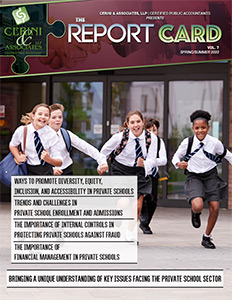Introduction
Private schools have a responsibility to create an environment that is diverse, equitable, inclusive, and accessible for all students, faculty, staff, and community members. Promoting diversity, equity, inclusion, and accessibility (DEIA) in private schools is not only the right thing to do, but it also leads to a better learning experience for all students.
Cultivate a Culture of Inclusivity and Accessibility
Creating a culture of inclusivity and accessibility starts with school leadership. The administration must prioritize DEIA in their policies, practices, and decision-making processes. This can include establishing a DEIA committee or task force, developing a DEIA strategic plan, and integrating DEIA principles into the school’s mission statement and core values. Additionally, schools should ensure that their physical environment, educational materials, and website are all accessible to all students, staff, and visitors. This means providing accommodations for students with disabilities, such as wheelchair ramps and accessible restrooms.
Offer Diversity, Equity, Inclusion, and Accessibility Training
One way to promote DEIA in private schools is to provide training for faculty, staff, and students. This training can cover topics such as unconscious bias, cultural competence, and accessibility. DEIA training can help school community members understand their role in promoting DEIA and create a more inclusive and equitable learning environment.
Incorporate DEIA into Curriculum and Programming
Private schools can promote DEIA by incorporating it into their curriculum and programming. This can include diversifying the curriculum to embody perspectives from different cultures, races, and ethnicities. Schools can also offer programs that focus on DEIA, such as diversity clubs, cultural celebrations, and accessibility awareness events.
Foster Inclusive and Accessible Hiring Practices
To promote DEIA, private schools must ensure that their hiring practices are inclusive and accessible. Schools can actively recruit candidates from diverse backgrounds and make accommodations for applicants with disabilities during the hiring process. Additionally, schools should provide ongoing professional development opportunities for faculty and staff to increase their cultural competency and understanding of accessibility issues. Diversity shouldn’t stop with internal staff, it should also be reflective at the Board level, with Board and management reflective of the communities and students served by the school. At the end of the day, ideas come from people, so by having leadership and staff with diverse backgrounds and perspectives collaboratively working together, the sky’s the limit for creative and imaginative ideas that can be developed.
Establish a DEIA Feedback Loop
Private schools should establish a feedback loop to assess their progress in promoting DEIA. This can include conducting surveys, focus groups, and other forms of feedback from students, faculty, staff, and community members. Schools should use this feedback to make necessary changes and improvements to their DEIA efforts and policies.
Conclusion
Promoting diversity, equity, inclusion, and accessibility in private schools is a continuous effort that requires a commitment from school leadership, faculty, staff, and community members. By cultivating a culture of inclusivity and accessibility, offering DEIA training, incorporating DEIA into curriculum and programming, fostering inclusive and accessible hiring practices, and establishing a DEIA feedback loop, private schools can create an environment where all students can thrive.

Albert Borghese, CPA
Director
Albert is a member of Cerini & Associates’ audit and consulting practice where he focuses on serving the firm’s special education and nonprofit clients. Albert is also involved in the marketing and development of the firm, and frequently participates in recruiting efforts, and research.






